GLITCHBOX – AUDIO SEQUENCING MUSIC INSTRUMENT
– August 1st, 2012
Amanda Ghassaei has published on her website an interesting project: the Glitchbox.
This instrument can do two different things:
-it can be used as a standalone audio device, with the audio data stored in the arduino’s flash memory
-it can also be used to sequence MIDI through a usb connection to your computer
-it can be used as a standalone audio device, with the audio data stored in the arduino’s flash memory
-it can also be used to sequence MIDI through a usb connection to your computer

The glitchbox is an electronic instrument used for live audio sequencing. Each of its nine buttons is linked to an audio file stored in its memory, new audio files may be loaded onto the instrument via USB. A switch on top allows the user to play, record, and loop a sequence of audio. Once recorded, additional audio may be recorded and automatically looped on top of an existing sequence. Old sequences can be cleared from the instrument’s memory and replaced with new sequences live. Two knobs on top of the instrument control volume and tempo, and a second switch mutes and unmutes recorded sequences.
There is also a detailed instructable with all the information needed.
Via:[Little Bird Electronic]
CAMPUS PARTY BERLIN – HACKATHON + FREE TICKETS
– August 1st, 2012
Campus Party is probably one of the oldest large-size LAN Parties in the world with series of events all over (Valencia, Mexico, Granada, Sao Paulo, Berlin …). We have been present at a few of their events both in Spain and Mexico over the last couple of years.
2012 Berlin Edition: IoT HACKATHON
This time we are going to be making a small workshop + overnight-hackathon about the Internet of Things where we will introduce you to the idea of connecting anything from -almost- anywhere. This event is arranged together with Telefonica Digital, who are partly sponsoring our research in the world of wireless communication.
The times aren’t fixed yet, but we will run a double session between August 24th and 25th. The participants in the workshop will get special gear courtesy of Campus Party Europe and a hands on introduction on how to get connected to the GPRS network. If you have a project that needs to speak out to the net, this workshop is for you.
There is room for 15 participants, join us!
Who will run the workshop?
David Cuartielles, Arduino Co-founder, will be hosting the workshop. However he will be arriving early and hang out at the festival between the 23rd and the 26th.
Francisco Javier Zorzano, from Telefonica Digital, who is the creator of Arduino’s GSM/GPRS library will arrive on the 24th and stay until the end of the festival.
It will be a great opportunity to meet, talk about projects, or hack a couple of things through the night.
We give away 50 free tickets to Arduino community members
Both if you want to come to the workshop or just if you want to pass by to see the festival, we want to give you the chance of getting free tickets to the festival. We are giving away 50 tickets to the event (worth 128Eur) for Arduino community members. Visit this page (or click on the banner at the beginning of the post), fill in the form and keep your fingers crossed. This call ends on August 8th.
IMPORTANT: For those of you applying to get free tickets to the event, we will announce the winners via the Arduino Blog … stay tuned!
VERTICAL PLOTTER PROTOTYPE
– July 30th, 2012
Nice Grasshopper-to-Arduino plotter hack from FablabTorino maker Pietro Leoni, a collabotator at Carlo Ratti Associati studio in Turin. We’d love to see code & sketches online soon, as much as a second edition of the plotter.
TWITTER-POWERED DIGILYMPICS
– July 30th, 2012

Samuel Cox, a maker who defined himself as a mix of “design, ideas and technology“, has invented a brand-new competition for digital citizens:Digilympics.
From his website:
2012 is not only the year of the Olympics, but also the launch of the first ever ‘Digilympics’, a twitter-powered race for sporting success where you determine the outcome. Four Lego athletes move down a physical racetrack as fans Tweet their team to move them further towards the finish line.Starting today (07/18/2012), the Digilympics will be a two-week event as the four teams – UK, US, Canada and Japan – compete for the prestigious Digilympics Gold Medal.The competition is open to anyone on the web, allowing them to Tweet their team to success using one of four unique Twitter accounts (UK_Digi, US_Digi, CA_Digi &JP_Digi). Tweets in support of a particular account will move that country’s contestant physically along a running track.After each race, the team victories are recorded and contestants go back to the starting line. At the end of the week the team who has won the most races will be given the Gold Medal online at digilympics.com
Under the hood, this funny race is enabled by a Processing sketch that seeks for Twitter replies on each account: a new reply triggers a motor-shield equipped Arduino board, which provides the movement to each athlet.

More information can be found here. And… let’s start twitting for your favourite team! ^^
[Via: Samuel Cox's Digilympics]
GUITAR EFFECTS PEDAL WITH PURE DATA AND ARDUINO
– July 26th, 2012
Pierre Massat is sharing his experience in building a guitar multi-effect on his blog. The project is based on a pedal built hooked up to an Arduino Uno and a PC running Pure Data.
RC REMOTES AND ARDUINO: A TUTORIAL
– July 25th, 2012
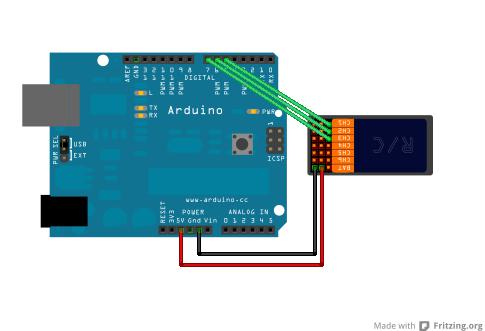
Nick Poole, from SparkFun, proposes this nice tutorial, where detailed instructions on how to connect a radio-controlled (RC) remote to an Arduino board are described in great details.
RC remotes are very simple controller, typically used to wirelessly control electrical rovers, cars and planes. Depending on the number of degrees of freedom required by the application (e.g., X and Y movement), an equivalent number of channels is provided by the remote, that can be easily connected to Arduino’s digital pins.
More information and some sample sketches can be found here.
[Via: SparkFun]
WEARABLE FABRIC ON THE ARDUINO STORE
– July 24th, 2012
We are happy to announce the first wearable kit on the Arduino Store . This kit has been made by Plug’n'Wear specifically for us. All fabrics in this kit are produced in Italy, and strongly related to a textile family business. If you want to get deeper into the story of this product have a look at Riccardo Marchesi presentation (still in Italian, soon to be traslated!) at World Wide Rome 2012.
Read over for Kit’s features
MASSIMO INTRODUCES ARDUINO LEONARDO
– July 23rd, 2012
In this video Massimo explains the Arduino Leonardo, talking about its differences with Arduino UNO and playing around with its mouse & keyboard features.
If you want to have a closer look to the latest arrival in the Arduino Family clickhere, if you want to follow Massimo’s project click here. Arduino Leonardo comes in two different flavours: with headers and without headers.
ARDUINO BARCAMP ZGZ 2012 – FOTOGRAFÍAS
– July 19th, 2012

El pasado fin de semana Arduteka, en colaboración con Cooking Hacks y el proyecto Milla Digital del ayuntamiento de Zaragoza, celebraron la Arduino Barcamp más multitudinaria realizada hasta la fecha en España.
Ponencias de todo tipo, desde impresoras 3D hasta las novedades que acontecen al mundo Arduino de la mano de David Cuartielles, pasando por algo de software libre como Plasma Active, un entorno KDE para dispositivos móviles, hicieron las delicias de todos los asistentes al evento.
Via | Arduteka
[INTERVIEW] DOROTEA PANZARELLA (EMMO)
– July 17th, 2012
Emmo is a ludic and interactive artifact for visually impaired children (age 4-6 y.) based on RFID technology. It is meant to motivate spatial exploration and helping children to develop the capability of creating mental topological maps.
The toy includes lighting and sounding elements for a treasure hunt, a space-related memory game. This activity is improving attention and acoustic capabilities.
The goal of the game is detecting each of the seven lighting elements according to the sound. The player is helped by this “magic wand” (finder),
The toy includes lighting and sounding elements for a treasure hunt, a space-related memory game. This activity is improving attention and acoustic capabilities.
The goal of the game is detecting each of the seven lighting elements according to the sound. The player is helped by this “magic wand” (finder),
Emmo’s main colours are black and white (high chromatic contrast is important to let the childern discrminate colours); lights & sound are further aid, marking different phases of the game.
The command interface is pretty simple and visible. Buttons can be distinguished by colour and shape.
The toy elements are designed in order meet childern needs and technology requirements.
The command interface is pretty simple and visible. Buttons can be distinguished by colour and shape.
The toy elements are designed in order meet childern needs and technology requirements.
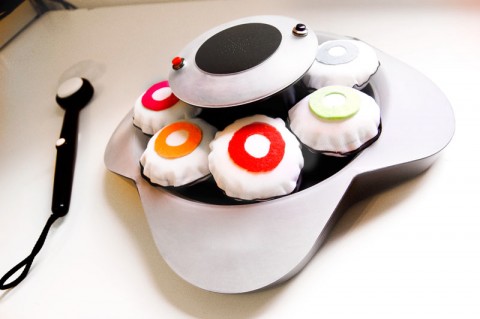
We asked Dototea Panzarella to answer few questions regarding her project.




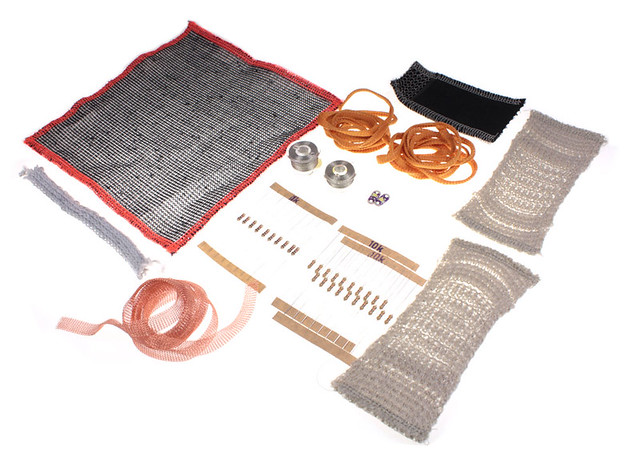
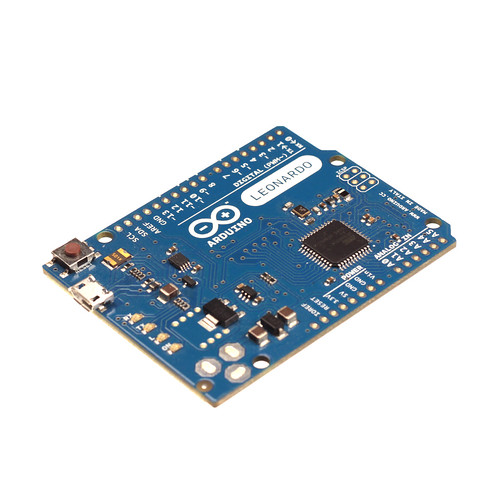
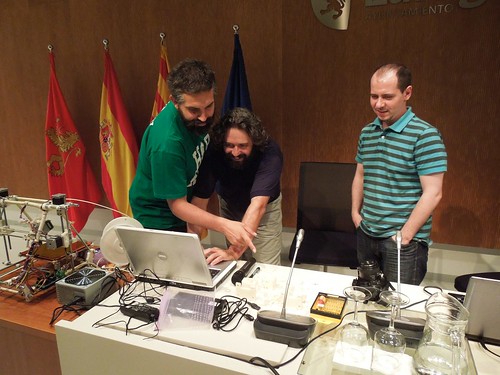






0 comentarios:
Publicar un comentario